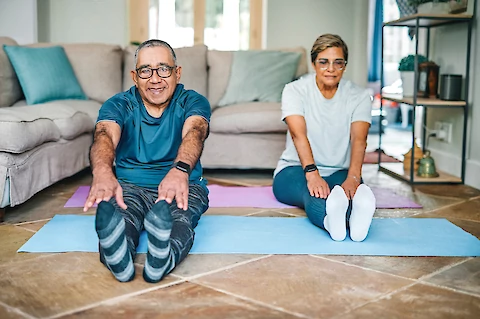
Physical activity plays a vital role in improving the overall health and well-being of individuals with Parkinson's disease. Regular exercise can help to improve mood, balance, sleep and increase mobility.
Parkinson's disease (PD) is a progressive nervous system disorder that is characterized by the loss of muscle control. It is caused by the degeneration of dopamine-producing neurons in the brain. Dopamine is a neurotransmitter that plays a crucial role in movement control. As the disease progresses, individuals with Parkinson's disease may experience both motor and non-motor symptoms.
Types of exercise for individuals with Parkinson's disease
Aerobic Exercise
Aerobic exercise is cardiovascular exercise, or any activity that increases heart rate and breathing rate. Aerobic exercises can be high-intensity or low-intensity in varying amounts of time. These exercises may include walking, jogging, swimming, cycling, and more.
Aerobic exercises can help improve cardiovascular fitness, reduce the risk of falls, and improve cognitive function. One study found, 30 to 45 minutes of aerobic exercise for three times a week had an effect comparable to conventional Parkinson drugs in patients with mild severity.
Strength Training
Strength training exercises involve using weights or resistance bands to build muscle strength. Strength training exercises can include bicep curls, leg presses, squats, and shoulder presses.
Strength training can help improve balance, reduce muscle stiffness, and increase bone density. Research has found that strength training is a great way to improve stability in those with PD, by strengthening postural muscles.
Flexibility and Balance
Flexibility and balance exercises can help improve range of motion and improve posture. Whether it is yoga or a simple stretching routine, flexibility exercises are easily accessible in both seated or standing positions. Balance exercises can include tai chi, standing on one leg, or walking heel-to-toe.
Flexibility and balance exercises help to improve overall mobility, reduce risk of falls, and hospitalizations.
Tips for safe and effective exercise
Before starting an exercise program, individuals with Parkinson's disease should consult with their healthcare provider to determine which types of exercise are safe and appropriate. It's also important to choose exercises that are enjoyable and can be easily incorporated into a daily routine.
To modify exercises for individuals with Parkinson's disease, it's important to focus on movements that are slow and deliberate. Safety precautions to take when exercising include using proper footwear, staying hydrated, and avoiding exercise in extreme temperatures.
Getting Stated
Regular exercise can be essential in improving the overall quality of life for those living with Parkinson’s disease. Incorporating a combination of exercises can be a beneficial way to maximize the benefits of physical activity. Senior Helpers is available to work alongside your healthcare providers to ensure you or your loved one is happy, safe, and cared for. As a leader in the home care industry and our caregivers are expertly trained in Parkinson’s disease care. Our caregivers are educated and trained on PD techniques, strategies, medication timing, light exercise and more.
Contact us today to learn more about our services and how we can help.